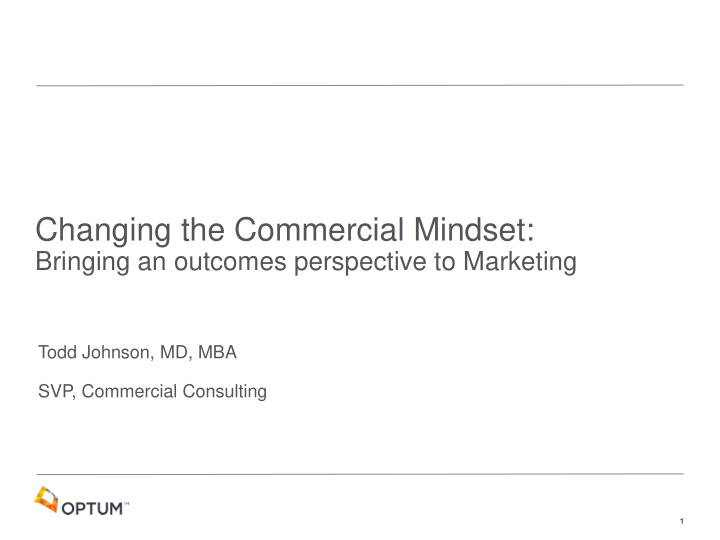



Changing the Commercial Mindset: Bringing an outcomes perspective to Marketing Todd Johnson, MD, MBA SVP, Commercial Consulting 1
2
Outcomes-based marketing / out kems basd mar ket ing / noun The action of promoting products based on customer needs by demonstrating clinical and economic health benefits per dollar spent. 3
MIPS will further increase the importance of outcomes 4
Insights and actions throughout the lifecycle Discovery / Phase I Phase II Phase III Post Launch / Phase IV Evidence needs assessments Cross-Optum Programs Complete data disease • Market access requirements • Prospective evidence Direct to providers and patients burdens • Clinical requirements • • generation / claims-linked Awareness Real-world patient • Required evidence for VBCs • • research platform Adherence Real-world clinical • Diagnosis • Real-world financial/ • Technology actuarial Launch Market Access pricing Natural histories of strategies Product / market disease strategies surveillance VBC Actuarial formulary VBC design modeling Mgmt Design The Holistic Patient Journey • Real-world EHR data • Real-world patients EHR-based Disease • Integrating primary and Epidemiology registries HEOR Post-launch EHR- secondary sources prospective and informed New retrospective provider product studies targeting uptake Market assessments Systematic analysis • Market trends reviews • Competitive trends Evidence • synthesis Pricing / rebate landscape Evolving Healthcare P&T and Trade Ecosystem Series Simulations (Actuarial Workshops) 5
6
How other companies are building Outcomes-based brands 1. Understand the Holistic Patient Journey 2. Identify high disease burden segments 3. Align incentives through VBCs 4. Promote dx/tx awareness 5. Drive diagnosis 6. Directly support adherence 7
8
Recommend
More recommend